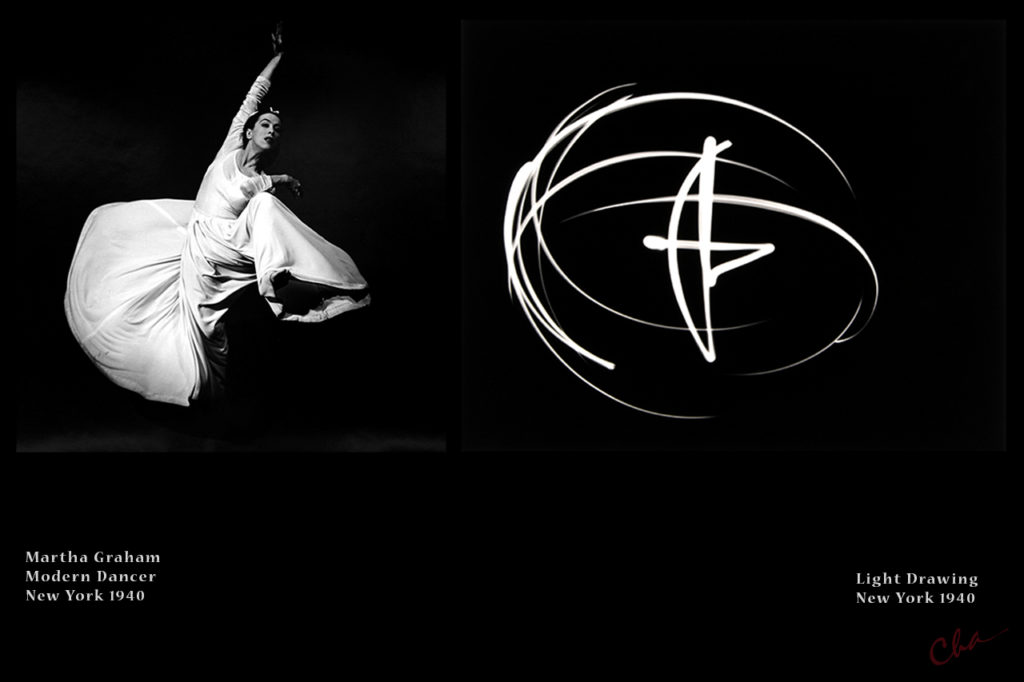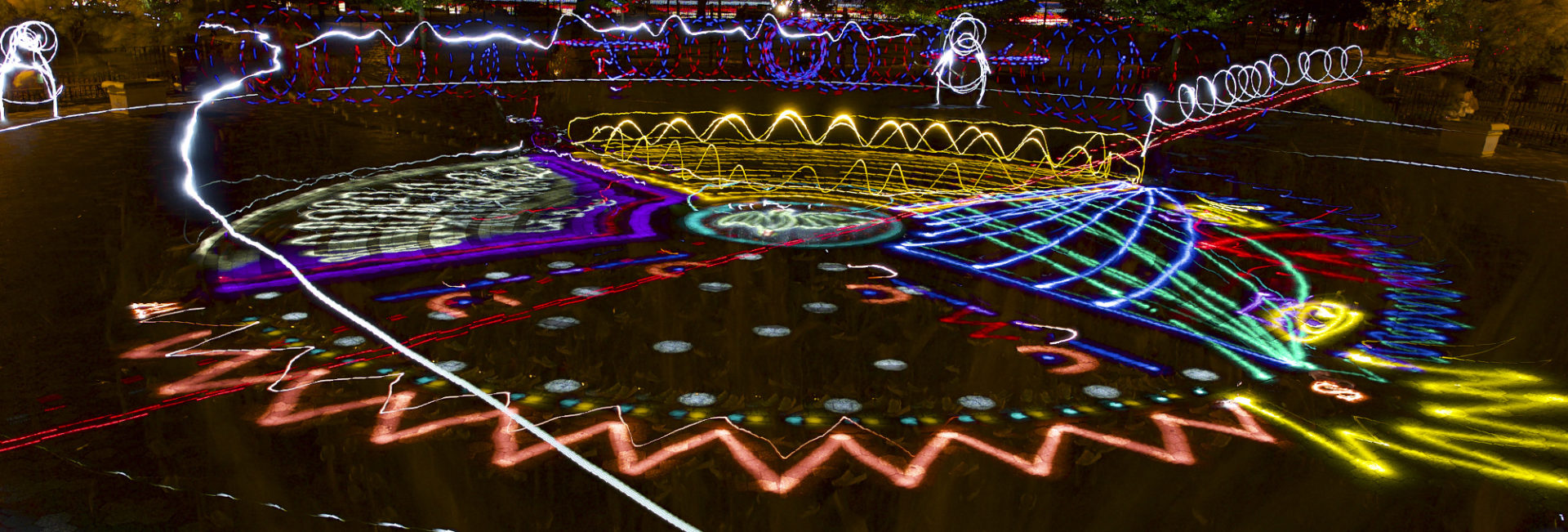
With the popularization of Light Painting Photography over the last decade, it would be timely to reopen the debate started between fine art photography and documentary photography. The root meaning of photography being “drawing with light”; photo comes from photon or light and graph from drawing.
The term Light Painting may seem redundant with the meaning of photography, yet it isn’t really because it differs in the way light is used to make an image.
Vintage Photography
In the early 20th century a handful of photographers such as Alfred Stieglitz or Edward Weston advocated photography as fine art, while another group along with Ansel Adams thought photography should stay sharp and accurate. The first group created a movement called “Pictorialism”, where they chose soft focus for a dreamy atmosphere; while the second group reacted to this with “Strait Photography”, not wanting to imitate.

Yet renaissance painters used the camera obscura to best reproduce on a flat surface what they could see with the naked eye; just as photorealism and hyperrealism painters in the 21st century made paintings to best resemble a photograph. Considering how many paintings resemble photographs and how many photographs resemble paintings, the idea of imitation has a new appeal, especially in our day and age of computer imaging. However, between light painters the debate between a sharp and a soft focus continues.

Light Painting
The technologies developed around photography have most often been to attain a sharp image, by reducing the time of exposure to light. In the beginning all photography was long exposure just like light painting. Reproductive and documentary photography aims to capture what the naked eye sees, disregarding that all is in movement. Weather close or far, weather still or in motion we can see everything at once in focus. The object of light painting is to capture light and or matter through movement over time. Light paintings often adds or shows what the naked eye cannot see, thus it is a very different way of conveying image and light.

A regular photographer chooses a subject, frames it and then uses natural or electrical light to capture a landscape, a portrait, or an object. Light has a more selective role for light painters. There are three basic techniques in light painting that each use movement. One is where the artist reflects moving light onto matter choosing what to show or not in a landscape, portrait or object. The irregular movements of light on a subject create a painted look. If the subject moves it becomes blurry, if not the subject will appear sharp but soft. Another technique is to move the light source directly towards the camera, making light drawings or light streaks.

What light shapes to make remains the artist’s choice from improvisation to light choreography. The third movement possible is that of the camera itself on a fixed light source, creating a light form, which is more difficult to control. There are more light painting techniques evolving all the time with each light painter testing, experimenting and inventing to portray their vision of life.
Light Experimentation
As a light painter of twenty years I have watched light and matter dispute their place in my images. I remember being captivated by a photograph called, “Mafia Spaghetti”, a black and white portrait of a mafia guy covered with threads of light looking like spaghetti. I kept wondering how I could see the man perfectly still at the same time as the movement of light traces from Christmas lights above. “Open Flash” was the term explained to me for setting off a strobe light to fix the matter or man while keeping the camera shutter open to record the movement of the hand-held camera.
" I have watched light and matter dispute their place in my images. "

Inspired by this, I experimented dancing with tiny light bulbs on my fingers, thus discovering how human movements can make light circle, figure eights, and spirals. The streets of Paris became my open studio, including the Moulin Rouge, train stations and along the banks of the river, La Seine. I liked postcard views of the city and had fun adding light graffiti, words or one-line drawings to the scenes. These early light painting included urban settings, a visible model and light streaks. Today these may be categorized as street art; I prefer to call it streak art in reference to the light.
" Soon after, I became fascinated with light as matter, light as content and less highlighting product."
I used more light and less matter by moving into the studio, where I hung a black backdrop, a blank slate, a door to imagination. Working in the dark allows for a multiple exposure effect in one shot similar to using computer software. The main difference being live is you can’t back up, part of the light painting challenge. Even more so when working with film than with digital where you see the results immediately, take more pictures and evolve more rapidly. My light painted editorial shots for fashion, sports and portraits in San Francisco were based on strobe lighting with a recognizable subject matter.

Shadow Research
Covering themes that mirror life reflections, I explored my Cha silhouette technique, where I would photograph only light while using the human body as empty space to structure the light shapes. I felt that pure light painting with no matter was closer to my imagination, to my feelings and thus I could express so much more than with regular photography or than with my first light paintings. During this period I focused on such series as, «Balancing Act», «Spreading the Wings», «Releasing the Ties», «Transformation», «Eternal Renaissance of the Adult Woman» and «Inkblots».

Composing Light
Recently, I have been developing a light painting that tends towards a more organic feel than some previous work. My Body Light involves light reflective body painting combined with light painting. The human body is no longer a structuring empty space, but becomes the moving light source or «light brush» itself creating softer more impressionistic subjects against the sharpness of light filled backgrounds. I particularly like the contrast between the soft and the hard in many of these works. Fuzziness evokes fuzzy feelings in mysterious ways, whereas sharpness tends to trigger intellectual reflection.
I find conventional photography uses light to catch only an instant of life, while light painting uses light to encompasses time through space thus closer to real life. Light painting with unlimited imaginative expression is more apt to produce an emotion and fall within the realm of fine art.
